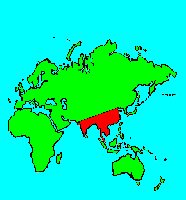SPECIES INFO
Great eared nightjar (Eurostopodus macrotis)is found locally in north eastern India and east through south east Asia to south western China. This is also found south to Malaysia. This 16 inch plus nightjar carries a very complex reddish brown, brown, and pale pattern. There is a set of pale brown feathers along the top of the head that project back beyond the head. The breast is pale, but marked heavily with black. The wings are reddish brown. The dorsal side of the tail is banded black and pale brown.
This is also found commonly in the Philippines.
There are 5 subspecies. The nominate subspecies, Eurostopodus macrotis macrotis is native to the Philippines. The subspecies cerviniceps is found from northern India to Malaysia. The subspecies bouldiloni is found in SW India. The subspecies jacobsoni is found in western Sumatra. The subspecies macropterus is found on Sulawesi (Celebes) and several nearby islands.The Indo-Australian eared nightjar subfamily (Eurostopodinae) is found from northern India to Malaysia and east through the Philippines and Indonesia to New Guinea and Australia. The subfamily contains 7 species all placed in the genus Eurostopodus.
Nightjars (Family Caprimulgidae) is a worldwide family of about
67 different species. Included in this family are the familiar nighthawks and Whip-Poor-Will.
Nightjars and Goatsuckers (Order Caprimulgiformes) are an order of about 120 species of birds that are found worldwide. Included in this order are the families of Oilbirds, Frogmouths, Potoos, Owlet-Nightjars, and Nightjars. Clements counts 28 species in three smaller families and 91 species in the nightjar family.
Aves contains about 8,650 different species of living birds known to science. Each year about one new species is discovered in some remote rain forest or remote island. In addition, scientists have been raising many subspecies to full species status which may raise the species count to 10,000. Birdlife recognizes 10,027 species as of 2011.
However, each year about one species goes extinct. The rate of extinction is increasing, and the rate of new discovery is decreasing, so that the number of bird species will soon begin to decline rapidly. Although different taxonomists would organize the birds differently, there are approximately twenty-seven orders of birds. These orders are broken down into about one hundred and fifty-five different families.
Recent research of the genetic structure of some of the shore birds and owls would indicate that the present organization of orders and families should have some modification.
The birds are a worldwide group of animals that are characterized by having the front limbs modified into wings that are used for flying. Perhaps the most unique feature of the birds is the feathers. These feathers are made up of a central support called a quill and a series of small filaments that are hooked together as barbs.
For many years it was believed that Archaeopteryx discovered in Bavaria was the oldest bird from about 150 million years ago. However, in l986, Sankar Chattterjee, a Texas paleontologist, reportedly discovered a bird in the genus Protoavis that lived about 225 million years ago.
When this project was begun in 1978, we used Austin & Singer for bird taxonomy. Since then, we have adopted many changes, but have kept some older concepts that are still found widely in the literature. Recently, we have used Clements and Howard & Moore. Very recently, we have used Monroe and Sibley for the higher taxonomy of the perching birds.
Backboned Animals (Phylum Chordata) are the most advanced group of animals on earth. These animals are characterized by having a spinal cord or backbone. Most members have a clearly defined brain that controls the organism through a spinal cord. Fish, amphibians, reptiles, birds, and mammals are in this phylum.
Currently, some taxonomists believe that the fish should be divided into two groups (sharks and regular fishes) and that there are some other primitive groups in the phylum such as hagfish or lampreys.
Animal Kingdom contains numerous organisms that feed on other animals or plants. Included in the animal kingdom are the lower marine invertebrates such as sponges and corals, the jointed legged animals such as insects and spiders, and the backboned animals such as fish, amphibians, reptiles, birds, and mammals.

